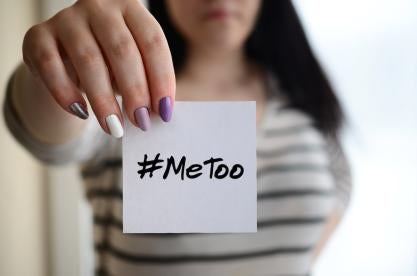Survivors of gender-motivated violence that occurred in New York City have until March 25, 2025, to file claims that previously expired under the lookback window created in the New York City Victims of Gender-Motivated Violence Protection Law (the “Protection Law”). The Protection Law’s lookback window is reminiscent of the New York Adult Survivors Act (“ASA”), which created a similar lookback window for adult survivors to bring civil claims for sexual assault no matter when the assault occurred. Since the ASA’s lookback window opened on November 24, 2022, more than 3,000 civil suits have been filed under the law. The lookback window closed on November 24, 2023, and advocates have already been pushing for a new statewide revival statute for survivors of sexual assault.
But survivors need not wait for an extension of the ASA to pursue justice in New York City. The Protection Law has an open lookback window that allows survivors to file a claim no matter when the act occurred. The window closes on March 25, 2025, but the Protection Law provides for a seven-year statute of limitations going forward. In some instances, such as infancy or disability that prevented a survivor from filing a claim, the statute of limitations extends to nine years.
Amended in 2022 to include the lookback window, the Protection Law has received much less fanfare than the ASA, but it provides just as powerful a tool for survivors seeking justice against perpetrators and the institutions that enabled them. The Protection Law creates a cause of action for “any person claiming to be injured by a party who commits, directs, enables, participates in, or conspires in the commission of a crime of violence motivated by gender.” N.Y.C. Admin. Code § 10-1104. It defines “crime of violence” as “an act or series of acts that would constitute a misdemeanor or felony against the person as defined in state or federal law” so long as “the conduct presents a serious risk of physical injury to another.” Id. § 10-1103. Further, it defines “crime of violence motivated by gender” as a “crime of violence committed because of gender or on the basis of gender, and due, at least in part, to an animus based on the victim’s gender.” Id. The Protection Law does not require the survivor to have previously complained to the police or for the perpetrator to be criminally prosecuted. Id. § 10-1105(c) (“Nothing in this section requires a prior criminal complaint, prosecution or conviction to establish the elements of a cause of action under this chapter.”).
Notably, unlike the ASA, which required that the conduct constitute a “sexual offense” as defined by the penal law to be actionable, the Protection Law does not require that the crime of violence be of a sexual nature. N.Y. C.P.L.R. § 214-j. And, in contrast to the ASA, the Protection Law allows a prevailing plaintiff to recover attorneys’ fees and costs in addition to compensatory and punitive damages. N.Y.C. Admin. Code § 10-1104.
Importantly, the Protection Law provides an avenue by which survivors can seek to hold institutions accountable for enabling gender-motivated violence. It provides that an injured plaintiff can bring suit against “a party who commits, directs, enables, participates in, or conspires in the commission of a crime of violence motivated by gender.” N.Y. Admin. Code § 10-1104. Thus, if an institution in New York City like an employer, school, or religious organization has turned a blind eye toward gender-motivated violence, survivors can sue the institution in addition to the individual perpetrator.
There is limited case law on the Protection Law, but some courts have applied a five-part test to determine whether a plaintiff has stated a claim. That test requires plaintiffs to prove “(1) the alleged act constitutes a misdemeanor or felony against the plaintiff; (2) presenting a serious risk of physical injury; (3) that was perpetrated because of plaintiff’s gender; (4) in part because of animus against plaintiff’s gender; and ([5]) resulted in injury.” Hughes v. Twenty-First Century Fox, Inc., 304 F. Supp. 3d 429, 455 (S.D.N.Y. 2018).
In the cases that do analyze the law, courts have differed in their application of the requirement that the crime of violence be committed because of an “animus based on the victim’s gender.” Some courts have held that alleging a sexual assault alone is not enough for conduct to fall within the law’s scope. In Hughes, for example, the court held that plaintiff’s allegations that she had been raped were not enough to establish a claim under the Protection Law because she offered “no specific allegations that [the perpetrator] harbored or expressed any animosity toward women,” but rather only alleged that he “was generally prone to angry outbursts in the workplace.” Id. The court acknowledged that the plaintiff’s allegations of rape would constitute discrimination on the basis of sex but found that a rape was not necessarily a “hate crime” such that it fell within the ambit of the Protection Law. Id. (“While actions arising from the statute are invariably predicated on reprehensible conduct against female victims, this factor alone cannot sustain a [Protection Law] claim.”). Similarly, in Rossbach v. Montefiore Medical Center, the court held that a plaintiff’s allegations of unwanted touching failed to show that the perpetrator’s conduct was “motivated by gender-based animus.” No. 19CV5758 (DLC), 2021 WL 930710, at *10–11 (S.D.N.Y. Mar. 11, 2021).
Other courts, however, have held that “animus” is inherent in crimes like rape. The court in Breest v. Higgins explained that rape and sexual assault inherently involve a lack of consent on the part of the victim, that “[c]oerced sexual activity is dehumanizing and fear-inducing,” and therefore that the nature of rape and sexual assault necessarily satisfied the Protection Law’s requirement that the conduct be based on animus. 180 A.D.3d 83, 83-84 (N.Y. App. Div. 2019); see also Engelman v. Rofe, 194 A.D.3d 26, 32 (N.Y. App Div. 2021) (allegations that a perpetrator committed a “series of different sexual attacks” demonstrated animus based on gender). And even if a court finds that sexual assaults alone are not enough to establish the animus necessary to ground a claim under the Protection Law, additional allegations that an assailant “acted inappropriately with and used degrading language toward other women” will likely suffice. Eckhart v. Fox News Network, LLC, No. 20-CV-5593 (RA), 2021 WL 4124616, at *25 (S.D.N.Y. Sept. 9, 2021), on reconsideration in part, No. 20-CV-5593 (RA), 2022 WL 4579121 (S.D.N.Y. Sept. 29, 2022).
In sum, the Protection Law differs from the ASA in important ways:
| Gender-Motivated Violence Protection Law | Adult Survivors Act | |
| Lookback window | Open until March 25, 2025 | Expired on November 24, 2023 |
| Place | New York City | New York State |
| Types of conduct covered | Must show that the act was due to gender-based animus, but conduct need not be sexual in nature | Need not show that the act was due to gender-based animus, but conduct must be based on a sexual offense as defined in the penal law |
| Remedies | Compensatory damages, punitive damages, injunctive and declaratory relief, attorneys’ fees and costs | Tort damages (compensatory and punitive) |
With the expiration of the ASA’s lookback window in November 2023, the Protection Law provides an additional path for survivors of sexual assault that occurred in New York City to pursue justice. Survivors have until March 25, 2025, to file previously expired claims under the Protection Law.



 i
i


